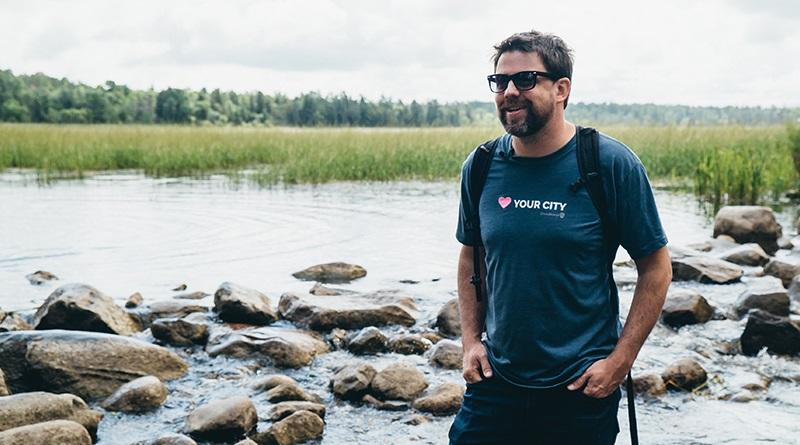Ryan Short of CivicBrand shares insights from his experience of helping cities and communities in the United States succeed with place branding – a practice which he observes is gaining traction across the country, not least thanks to its ability to bring different city departments together.
Ryan, in our earlier conversation you mentioned that you are very passionate about branding, design, placemaking, and public engagement and how these things shape our communities – and in turn how our communities shape us. What brought you to this area of work – what triggered your interest in human-centered place branding?
I spent my early 20’s in the music industry touring across the US and UK. In doing so I was able to get a front row seat of how cities are different and how they are the same. I started to recognize patterns in development and design and how those things impacted the vibrancy, culture, health, and overall quality of life in those communities.
However, coming from a marketing and branding background, rather than being an architect or planner, I saw things from the angle of how the built environment shapes how communities communicate both internally and externally about who they are. Everything from their wayfinding and marketing to how people talk about their community.
Have your views changed over the years, perhaps due to your experience of working with numerous towns, neighborhoods and urban centers across the USA?
The big thing that comes to mind is the role of public engagement. From day one it has been the foundation to our approach. We take a truly equitable approach to engagement to ensure we are reaching everyone. However, we have also seen how cities fall into the trap of letting public engagement stall moving forward with action on things they already know they need to do in order to build consensus.
“Our big challenge now is helping cities decipher between the things they already know they need to do and therefore don’t need more engagement on versus items where they absolutely need to go much deeper with engagement.”
As a frequent speaker and host of the ‘Eyes on The Street’ podcast, which trends or changes do you observe in how “place branding” is approached within the United States? Is the term place branding even used?
Place Branding as a term and practice in the US is definitely growing and becoming more understood. It’s still behind Europe and other parts of the world but more and more people are getting it.
We have seen many more communities where the city government, CVB, Chamber and DMO are coming together to collaborate on a singular place brand identity rather than all running in four different directions.
I think the fact that it’s less understood in the US makes it a huge opportunity for those communities that do get it.
The biggest trend or focus area within Place Branding has definitely been talent attraction and retention.
Are there any cities or communities which you find especially noteworthy for how they have developed their location identity and reputation through human-centered design, civic engagement and placemaking?
We’ve been doing a lot of work in Breckenridge, CO and I’m just really impressed with their town staff and their approach to authentically living their brand and making it part of the culture and all the small things they do.
On a recent project we worked with them to design a strategy around their town staff core values. Core values are so often just generic words and phrases that are at best memorized and then stuck in a drawer or put on a poster in town hall. With Breckenridge we developed a field guide to bring those core values to life through specific actions and give them the tools and strategies to live it on a daily basis.

A few words about your podcast – who is it for and what topics do you cover?
Our podcast is primarily for those who are actively shaping their communities in a professional capacity – so city leadership, staff, planners, and architects. However, we’ve had multiple residents who discover our podcast or articles reach out to tell us they’ve been inspired and shared our content with their city council and leadership.
So it’s a bit of both top-down and bottom-up approach. We cover a little bit of everything: from engagement, data, placemaking, civic pride, tourism, economic development, destination marketing and management, etc.
Imagine a city developer or economic development professional approaches you at a conference, asking your advice on how to do place branding well. What would you tell them?
I’d tell them to focus on and surface all the small things that will shape the experience and define that place brand rather than what the big, huge things are.
If you claim to be a music city, rather than focus on a huge music hall or events, think more about your busking laws and musician loading zones. Those are the real day to day things that would define if you really are a music city or not.
Based on your consulting practice, which are the main challenges towns and cities – or regions – struggle with in terms of place branding?
I think the biggest challenge is implementation.
Cities deal with budget and staffing challenges more so than your average business. Therefore they can have the greatest place brand strategy but if they can’t implement it then it’s worthless. To overcome that we really need focus on delivering implementation plans with high impact low effort tactics, surface the low hanging fruit, and identify catalyst projects that will arm residents and businesses to run with elements of implementation.
Anything else you’d like to mention?
I think the biggest thing that gets in the way of communities moving forward with and successfully implementing a place brand is the lack of collaboration between separate organizations in the community.
Therefore a massive first step can be simply bringing CivicBrand in to do a simple 2-4hr workshop with leadership across those different organizations. This will start that conversation and surface opportunities for what can be possible with a truly comprehensive place brand strategy.
If just one person from one department sees the value of it, I would encourage them to reach out and see how we can set up a workshop in your town.
Thank you, Ryan.
Connect with Ryan Short on LinkedIn.
Visit the CivicBrand business profile. CivicBrand is a member of the TPBO network of recommended consultancies.


